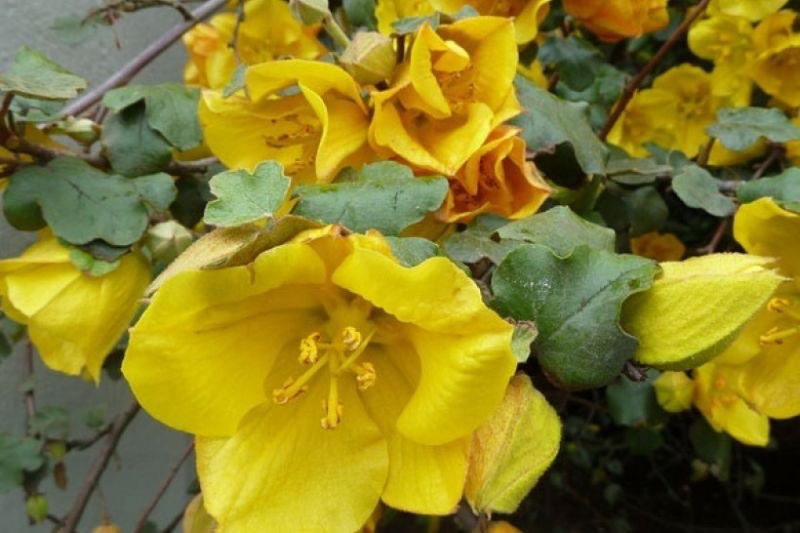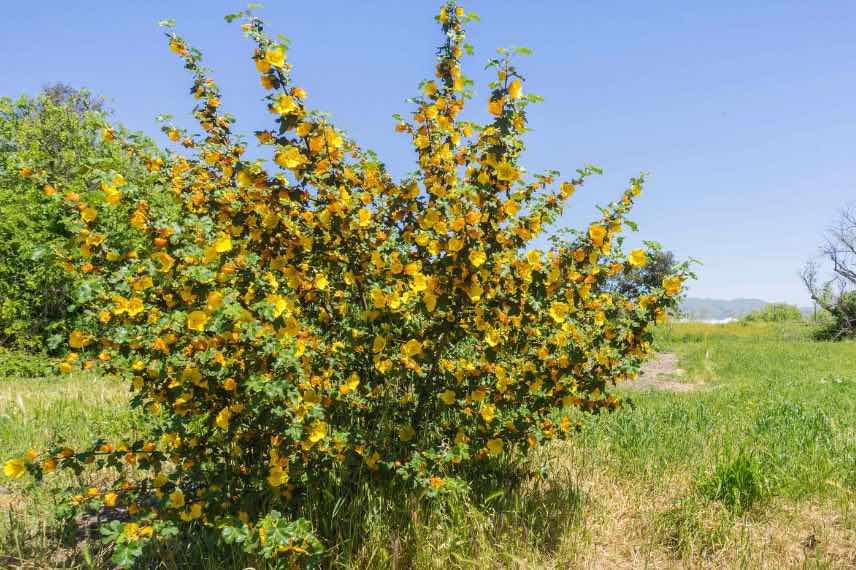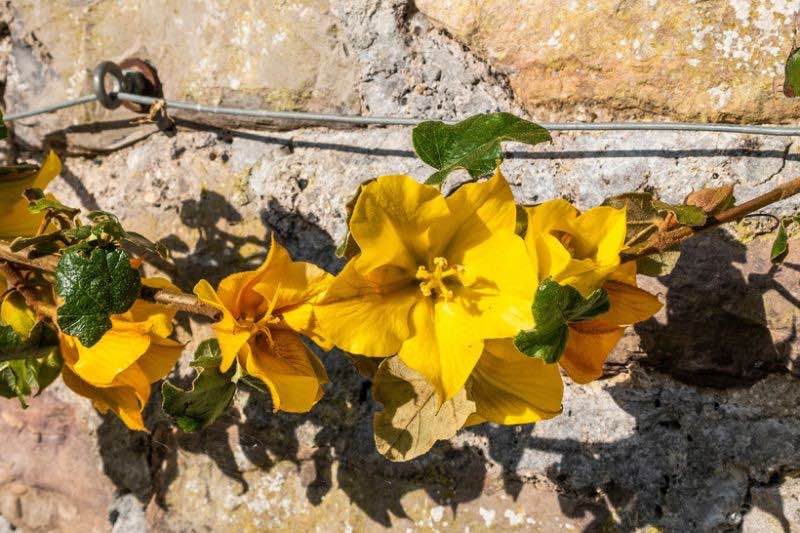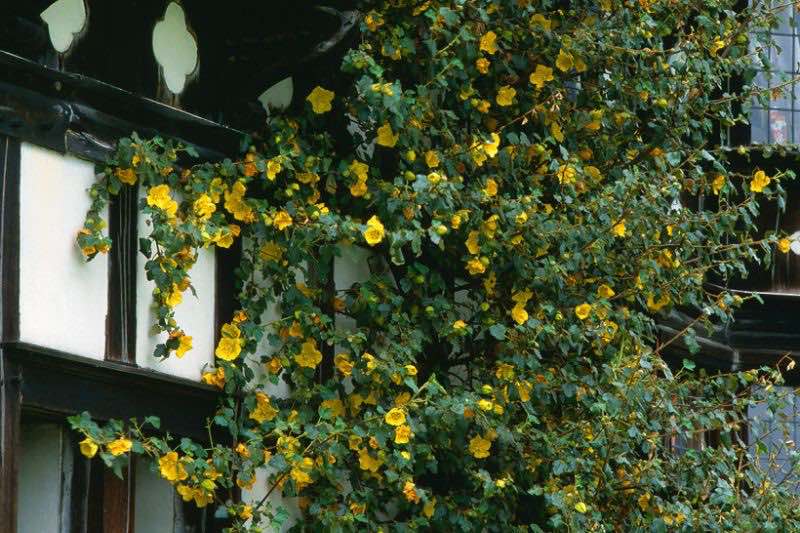Fremontodendron is a magnificent woody climbing stem plant with sun‑like summer flowers, native to California. Its scientific name is Fremontodendron californicum. This bush with semi‑evergreen to evergreen leaves is notable for its superb bright yellow flowers that bring a vivid touch to any garden. As it has specific needs in terms of light, water, soil and temperature, it is important to understand how to care for this plant to keep it healthy and encourage abundant flowering. Best way to train a Fremontodendron is to espalier it against a wall, giving increased sun exposure and better protection from the elements.
Fremontodendron thrives in Mediterranean climates, but can also adapt to other climates. It requires full sun exposure to encourage abundant flowering. It needs well‑drained soil, as excess water can lead to root rot. It also prefers neutral to calcareous, fertile soil. Finally, regarding temperature, an established bush can tolerate light to moderate frosts, but colder temperatures can damage the plant, so protect it during periods of severe cold.

Why training and pruning a Fremontodendron?
Training and pruning are important practices to maintain health and appearance of Fremontodendron. Training consists of guiding plant branches along a support, such as a wall, to create an attractive structure and prevent tangling. Pruning controls bush growth, promotes a compact habit and removes dead or damaged branches on a trained plant. Both practices improve air circulation and maximise light exposure, resulting in more abundant flowering. Habit of Fremontodendron is naturally dense and rounded. Training also helps protect it from wind and rain. This warm‑region bush does not like moisture at its base. By exposing it to maximum sun against a south‑facing wall that stores heat, training also helps improve its hardiness and permits cultivation in regions with cold, dry winters. It is hardy down to −12°C once established.

When to train and prune a Fremontodendron?
Best time to train a Fremontodendron is in spring, when plant growth resumes. It is also the ideal time to prune if necessary, at end of winter, in March or April. It is recommended to prune lightly a second time after flowering, removing faded flowers and trimming shoots that have grown in a disorderly way. This helps plant retain a compact, neat shape. Handle your Fremontodendron californicum with gloves, as young shoots and undersides of leaves are covered with small hairs that can cause allergic reactions and irritation for some people.
How to train?
- Choose a solid, durable support for training the plant, such as a wall.
- Install a structure such as a wood or metal trellis, or cables.
- Tie branches gently as they grow, using garden ties or soft string.
- Train branches upwards and outwards to create an open, attractive structure.
- Avoid tightening ties too much, to allow plant to develop without restriction.
- Check ties regularly to ensure they have not come loose or snapped.
- Once plant is well trained, continue to monitor growth and readjust ties if necessary.

How to prune?
- Use clean, sharp pruning tools, such as pruning shears that have been disinfected.
- Identify dead, damaged or badly positioned branches and remove them.
- Prune just above a bud or a healthy leaf and angle the cut slightly away from the plant.
- Avoid excessive pruning so as not to compromise the plant's ability to produce flowers. Remove at most 1/4 of shoot length.
- If necessary, remove branches that cross or rub against other branches to prevent wounds and disease.
- After pruning, remove all cut material and clean work area.
Aftercare following training and pruning
After training and pruning Fremontodendron, provide appropriate care to promote recovery and healthy growth. Fertilise Fremontodendron once a year in spring with a balanced fertiliser to promote abundant flowering. During growth period, monitor the plant for signs of disease or pests and take appropriate action. Finally, continue to monitor growth and adjust ties as necessary.
Fremontodendron is a splendid bush with yellow flowers that can add a vivid touch to your garden. By understanding its needs for light, soil and temperature, and using appropriate training and pruning techniques, you can keep this plant healthy and enjoy its superb yellow flowers for many years.

Equipment needed
- Do not forget gloves; they are essential for handling this irritating plant.
- Pruning shears
- Wood or metal trellis or cable‑type support
- Soft ties to avoid damaging stems and allow unrestricted growth
































Comments